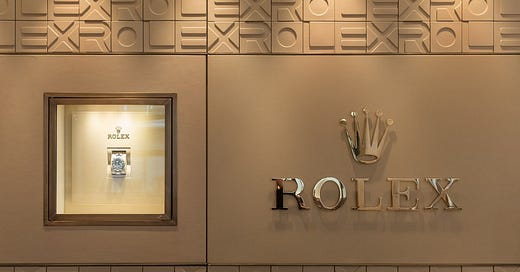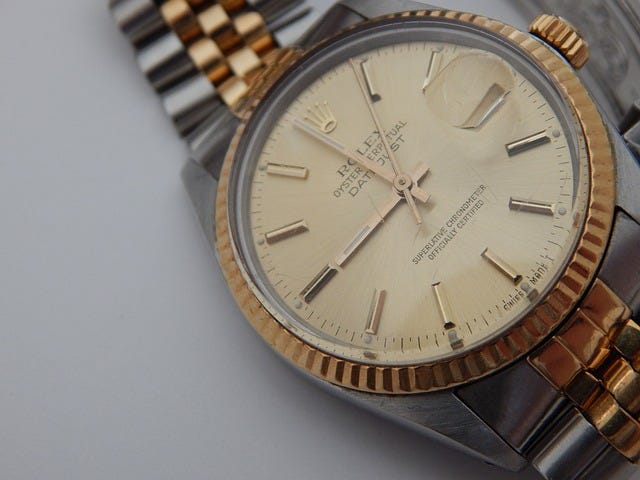The Timeless Secret: How Rolex Became the World's Most Profitable Watch Company
Is Rolex really a non-profit organization and what does it mean for their business strategy?
Rolex has long been a leader in the luxury watch industry, with its reputation for quality, craftsmanship, and style. The company's history dates back to 1905, when founder Hans Wilsdorf started producing watches in Switzerland. Since then, Rolex has become synonymous with luxury, and its watches are worn by some of the world's most powerful and influential people.
But what sets Rolex apart from other luxury watch brands is not just its history, but its business practices. Rolex is a non-profit organization, which means that it is dedicated to furthering a particular social cause or advocating for a shared point of view, rather than distributing its income to the organization's shareholders, leaders, or members. In economic terms, it is an organization using its surplus of revenues to further achieve its ultimate objective.
This unique approach has allowed Rolex to maintain a long-term brand-and-company-building strategy that allows the company to flourish for many decades to come. Rolex is not desperate to boost sales in the coming year, but rather to make sure it has a flourishing and well-established brand 30, 40, or even 100 years from now.
But being a non-profit does not mean that the company has no interest in making money and seeing good numbers. In fact, Rolex is the world's most profitable watch company, with annual revenues estimated at $7.9 billion. This success can be attributed to several factors, including its commitment to quality, its innovative design, and its ability to adapt to changing consumer tastes.
Rolex's commitment to quality is perhaps its most defining characteristic. The company produces its watches in-house, which allows it to have complete control over every aspect of the manufacturing process. This includes the design, the materials used, and the assembly. This attention to detail ensures that every Rolex watch meets the company's strict standards for quality, reliability, and accuracy.
In terms of design, Rolex has always been known for its classic and timeless style. The company's watches are designed to be understated and elegant, rather than flashy or ostentatious. This approach has helped to establish Rolex as a symbol of luxury and sophistication, rather than mere status.
But Rolex is also known for its innovative design. The company has introduced several new technologies over the years, including the first waterproof watch, the first watch with a date display, and the first watch to show two time zones at once. These innovations have helped to keep Rolex relevant in a rapidly changing market, and have helped to solidify the company's position as a leader in the luxury watch industry.
Today, Rolex's business plan is focused on continuing to innovate and improve its products, while also expanding into new markets. The company has recently opened several new boutiques in Asia, including in Shanghai and Tokyo, and is working to establish a stronger presence in emerging markets like China and India.
Rolex is also focusing on sustainability, and has made a commitment to reducing its carbon footprint. The company is working to reduce its energy consumption, improve its waste management practices, and source more sustainable materials for its watches.
Rolex's unique business model, unwavering commitment to quality, and innovative design have propelled it to become the world's most profitable watch company. However, what's even more impressive is that Rolex has achieved this level of success while remaining a relatively small company with only around 7,000 employees worldwide. In fact, this exclusivity has played a key role in Rolex's continued success and has allowed the brand to maintain its prestige in the luxury watch market. With its focus on long-term brand and company-building strategies, Rolex seems poised to continue its reign as the most profitable watch company for many years to come.
Despite Rolex's secretive nature, it is estimated that the company's annual revenue is around $5 billion, making it one of the most profitable luxury brands in the world. In 2020, Rolex was ranked as the 78th most valuable brand in the world, with a brand value of over $9 billion. The company's success is further evident in its profit margin, which is estimated to be around 20-25%, a remarkable figure in the luxury industry. Moreover, Rolex has managed to maintain its position as the top luxury watch brand for several years in a row, consistently beating its competitors in terms of market share and revenue. These numbers are a testament to the company's strength and resilience, and it is clear that Rolex will continue to be a major player in the luxury watch industry for many years to come.
In conclusion, Rolex is a fascinating company that has managed to become the most profitable watch brand in the world. Its success can be attributed to a combination of factors, including its innovative design, high-quality materials, and excellent marketing strategies. Additionally, its non-profit status allows it to focus on long-term growth and brand building without the pressure of pleasing shareholders. While Rolex remains a secretive company, it has undoubtedly managed to capture the attention and admiration of consumers all over the world.
Thank you for reading this article. Remember, our daily newsletter provides valuable information for free, and all you have to do is read it. Our brief 2 to 5 minute reads will keep you informed about economics and finance with essential information and news. So, subscribe now and let us take care of the rest!
Disclaimer: Please note that I am not a financial advisor and the information provided is my personal opinion, and should not be taken as professional financial advice.









